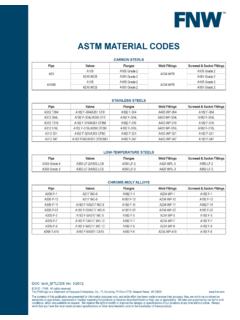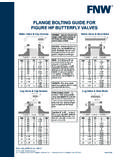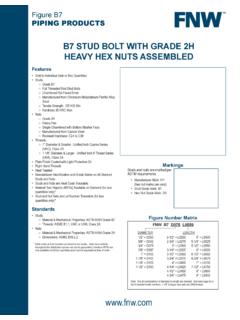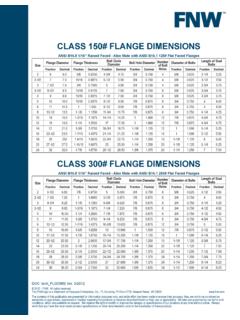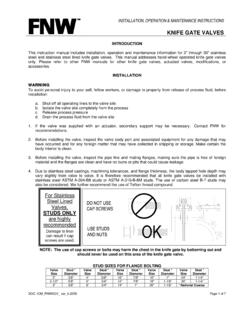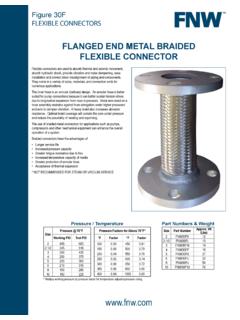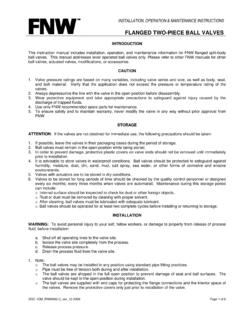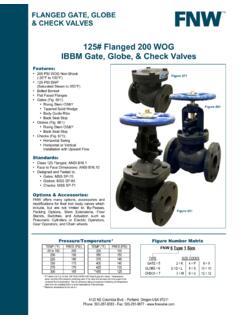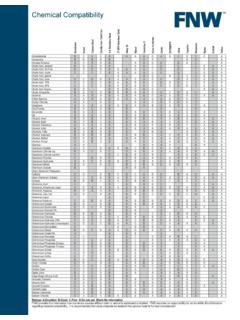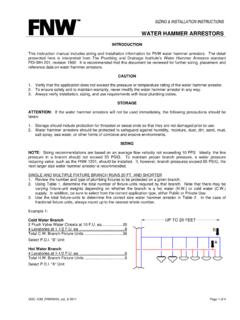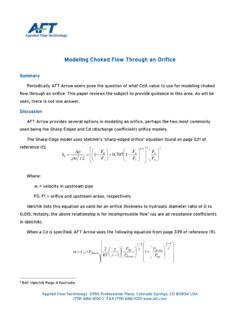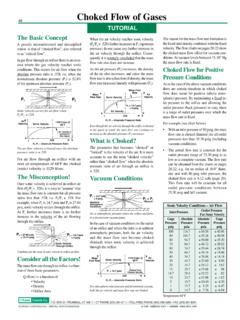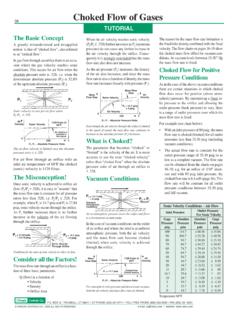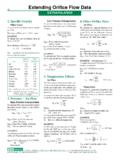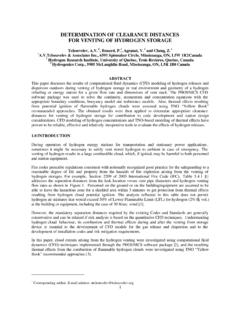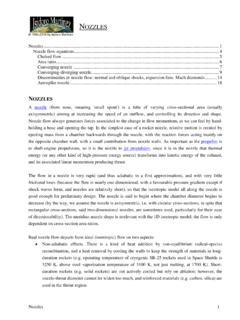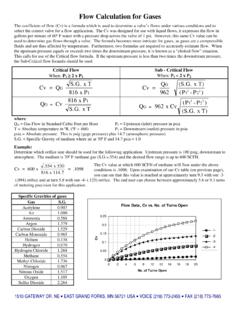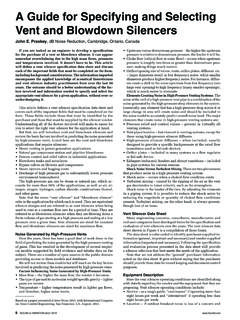Transcription of ABOUT Cv (FLOW COEFFICIENTS) - Welcome to …
1 ABOUT Cv (FLOW COEFFICIENTS) DOC: FNWA boutCv Ver. 3/2012 2012 - FNW. All rights FNW logo is a trademark of Ferguson Enterprises, Inc., PL Sourcing, PO Box 2778, Newport News, VA 23609 for FLUIDSCv for liquids is the volume of 68 F water in gallons per minute that passes through a valve at a pressure drop of 1 PSI. Flow for a given Cv is typically calculated from the following : Q = Valve flow rate in gallons per minute (US GPM) P = Difference between upstream and downstream pressure in pounds per square inch (PSI) = Conversion factor for fluids computed in relation to water D = Density of fluids in pounds per cubic footQ = Cv x P x DThe formula above utilizes a conversion factor of which is the density of water in lbs/ft.
2 The following formula is often used using a fluid s specific gravity (G) where the relationship to water density is already = Cv x P GLikewise, Cv for particular flow characteristics can be determined from this formula:Cv = Q x G PKv = Q x D 1000 x PSimilar formulas are available using metric units:Q = Kv x P x 1000 DQ = Kv x P GKv = Q x G PWhere: Q = Valve flow rate in cubic meters per hour (m /h) P = Difference between upstream and downstream pressure in Bar 1000 = Conversion factor for fluids computed in relation to water D = Density of fluids in kilograms per cubic meter (kg/m ) G = Specific GravityCv for GASESThe Cv formula for liquid flow can be modified for gas flow.
3 However, since gases are compressible, they are affected by temperature. In addition, there are two flow conditions which must be considered, sub-critical flow, and critical (or choked) the upstream pressure (P1) is less than two times the downstream pressure (P2), the formulas for sub-critical flow should be = QG x (G x T) 962 (P1 - P2 )QG = 962 x Cv (P1 - P2 ) (G x T)Where: QG = Gas flow rate in Standard Cubic Feet per Hour (SCFH) P1 = Upstream (inlet) pressure in PSIA (absolute pressure) P2 = Downstream (outlet) pressure in PSIA (absolute pressure) PSIA = Absolute pressure. This is PSIG (gauge pressure) plus (atmospheric pressure) T = Absolute temperature in R ( F + 460) G = Specific gravity of medium where air at 70 F and PSIA equals the upstream pressure (P1) equals or exceeds two times the downstream pressure (P2), the formulas for critical (choked) flow should be = QG (G x T) 816 x P1QG = Cv 816 x P1 G x TNOTE: The formulas provided here are simplified for general use.
4 There are many factors that can be considered when sizing valves for flow control including, temperature, pipe size, viscosity, flashing and cavitation conditions, turbulent flow, two-phase flow, and expansion factors to name a few. For critical flow control, control valve software or a systems engineer should be consulted.
